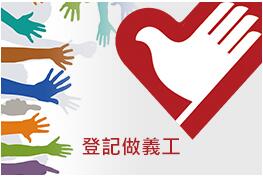About Rare DiseasesRare Disease Wiki

Epidermolysis Bullosa (EB)
Name of disease:
Epidermolysis Bullosa (EB)ICD-10 diagnosis code:
Q81Causes:
Mutations in genesMode of inheritance:
- Dominant which means the patient inherits one normal copy and one copy of the gene that causes EB. The abnormal copy of the gene is stronger or “dominant” over the normal copy of the gene causing the disease. A person with a dominant mutation has a 50% chance of passing on the disorder to each of his or her children.
- Recessive which means that the patient’s parents do not have the disease but both parents have an abnormal gene that causes EB. When both parents carry the recessive genes there is a 25% chance per pregnancy of having a child with the disease. There is a 50% chance per pregnancy of having a child who inherits one abnormal recessive gene making them a carrier.
Prevalence:
Some type of EB occurs in an estimated 1 out of every 50000 live births in the US.EB is rare. It’s difficult to know how many EB patients there are in Hong Kong particularly as there isn’t a centralized or coordinated service. If we look at New Zealand with a population of 4.8 million they have 150 with the genetic disorders of EB with 11 classed as severe. Australia has a population of 24.6 million and 1000 patients. From UK statistics there will be one EB patient in every 17000 live births and 1 in 227 of the general population carry a defective EB gene. If the population of HK is at all comparable then we would expect 200-300 EB patients in Hong Kong but we only know of about 10 in total.
Diagnosis:
- Review of family and medical history
- Complete a physical exam and examine the skin which can help doctors identify where the skin is separating to form blisters
- Perform a skin biopsy and review the tissue sample using special microscopic techniques which helps doctors identify which layers of the skin are affected and determine the type of epidermolysis bullosa the patient has
- Conduct genetic testing to identify specifically which gene mutations the patient may have
Age of onset:
Usually diagnosed in babies and young childrenCommon signs and symptoms:
Common symptoms in all types of EB include- Skin that blisters easily
- Blisters on the hands and soles of the feet
- Thickened skin that may be scarred or change colour over time
- Thickening of the skin and nails
Available treatment (medicinal and non-medicinal):
There is no cure for EB. The goals of treatment are to prevent and control symptoms by:- Managing pain and itch
- Protecting skin and caring for blisters and wounds
- Treating and preventing infection
- Maintaining good nutrition
Disease management tips:
- Keep the skin cool. Never apply anything hot to the skin and avoid water warmer than your body temperature when bathing.
- Wear loose-fitting soft clothing to avoid rubbing against the skin or causing friction.
- Avoid overheating by keeping rooms at a constant cool temperature.
- Apply lotions, creams, or ointments to the skin to reduce friction and keep the skin moist.
- Use sheepskin on car seats and other hard surfaces.
- Wear mittens at bedtime to help prevent scratching while asleep.
References:
- http://www.cdek.liu.edu/icd10/Q81/
- https://www.niams.nih.gov/health-topics/epidermolysis-bullosa
- https://rarediseases.org/rare-diseases/epidermolysis-bullosa/#affected
- https://www.debra.org.hk/what-is-eb/what-is-eb/en/
- https://www.niams.nih.gov/health-topics/epidermolysis-bullosa/diagnosis-treatment-and-steps-to-take
- https://www.nhs.uk/conditions/epidermolysis-bullosa/



